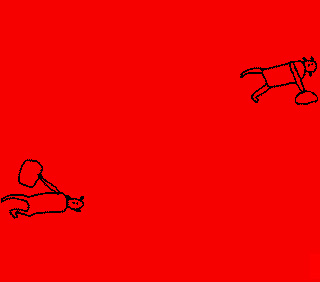Splash art originated in the 1940s in comics, where the term referred to a full page of visuals at the front of a book. Pages were designed to engage the reader's imagination along the lines of the comic's broader concept, while standing independent from the narrative. In the late 1990s, when the widespread use of the application Flash opened up new possibilities for animation and interactive media, the idea of the splash page migrated to web design. Online splash art brought visual excitement to a webpage when low modem speeds made it impractical to post large or moving images amid a site's textual content.
Rhizome introduced splash pages to its web site in 1998 in order to display artwork with greater immediacy....
Rhizome introduced splash pages to its web site in 1998 in order to display artwork with greater immediacy....
Launch Project 
 splash art by Reinis, 2001
splash art by Reinis, 2001
About
Four doodles of vaguely feline figures recline on a red field. Roll the cursor over one, and another changes its pose. Reinis' splash page plays with cause-and-effect relationships to frustrate viewer expectations. There is no clear connection between the movement of the mouse and the actions of the cats. Reinis is a common Latvian name, but attempts to further determine the identity of this artist have unfortunately fallen short.